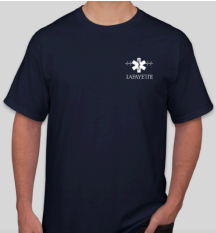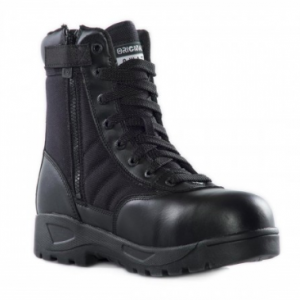What can I expect on an EES shift?
EES has a high call volume. The crew that you will be with will likely respond to 911 calls and will also do inter-facility transports. If you are an observer, you will mostly observe during calls but, depending on the crew, you may be asked to get a pulse oximetry reading (put the pulse oximeter on the pt’s finger), take a manual blood pressure, or obtain a patient’s medical history. If you are an EMT, you will be assisting the EMT or paramedic with whatever they need; this may include getting a SpO2 reading, taking BP, performing a 4- or 12-lead ECG, preparing an IV, or recording a pt’s medical history.
What should I wear on an EES shift?
If you are an observer, you must wear a plain navy/black shirt (or the LCEMS Club shirt) with navy blue pants (no jeans/sweatpants/leggings) and sturdy, closed-toe shoes. If it is cold outside, you can wear a plain jacket (preferably dark color) with limited or no visible lettering.
If you are an EMT, you must wear the LCEMS Club shirt or an EES uniform shirt with navy blue tactical pants and black boots. If it is cold outside, you can wear the EES zip-up jacket.



How can I get to the EES station? What is the address?
If you have a car, you can drive to the station yourself. If you do not have a car, the best way to get a ride is text in the LCEMS Club GroupMe. Other members who have a car might be able to drive you depending on their availability. The address of EES is 908 Packer St, Easton, PA 18042.
What can I do while at the station when there are no calls?
You are free to do homework or any other work, but we highly encourage that you interact with the crews on shift as well. Everyone at EES is extremely friendly and would be willing to answer any questions you have related to EMS or EES. Some may even offer to go through certain skills with you, such as splinting, using the LifePak, or taking vitals. Be engaged and ask tons of questions!!
Who do I ride with at the station?
New volunteers ride with any available ambulance crew until cleared to be a primary EMS caregiver. If there are several volunteers there, only one volunteer can ride in an ambulance at a time so the volunteers will switch between calls.